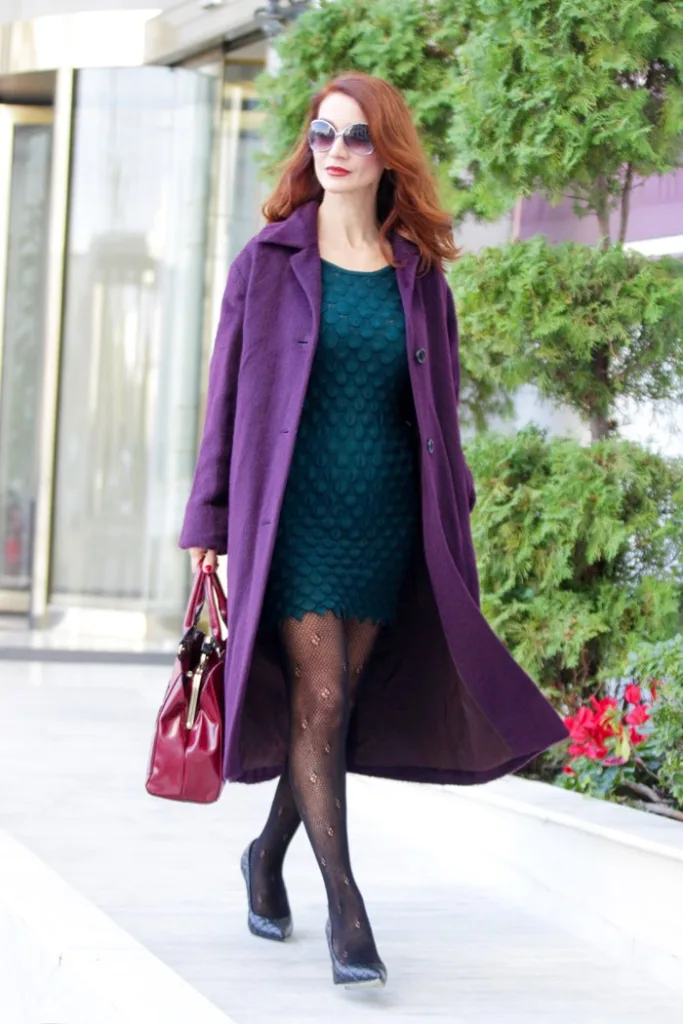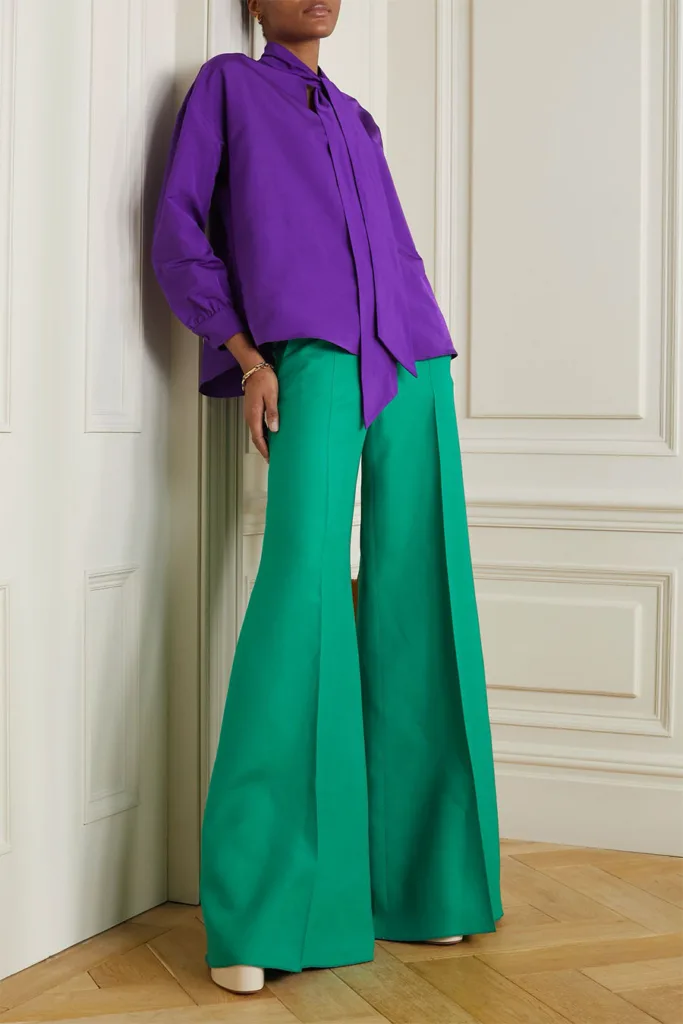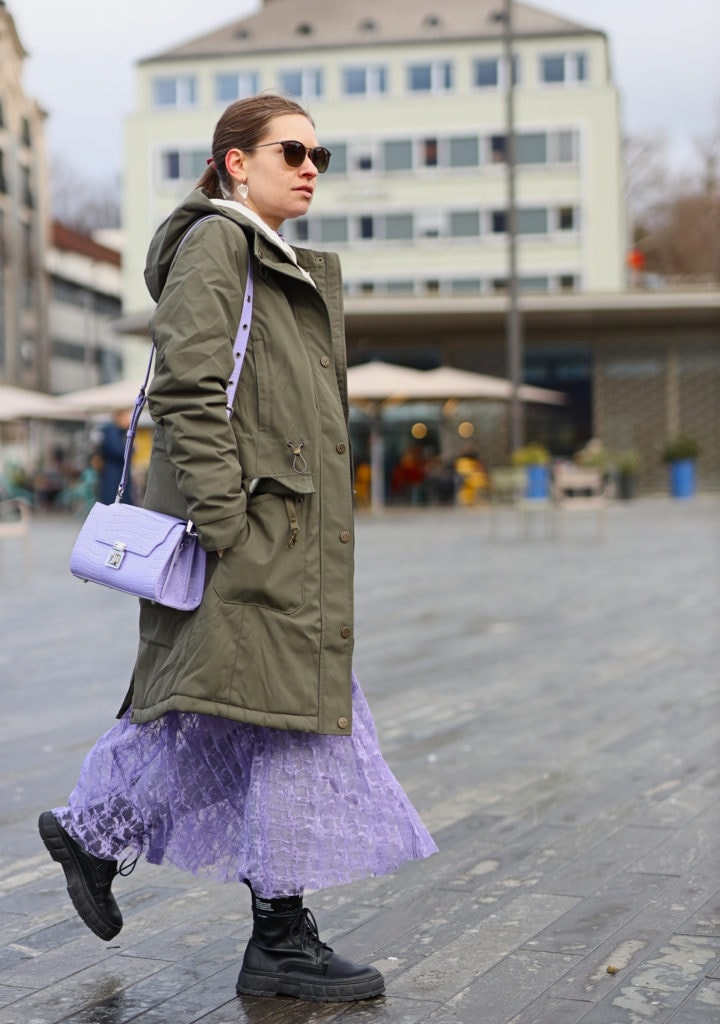Colors play a vital role in our lives. They have the power to affect our mood, emotions, and even our behavior. The right combination of colors can create a harmonious and visually appealing environment, while the wrong combination can be jarring and unappealing. In this blog post, we will explore the world of colors and answer the question, do green and purple go together?
Green is a color that represents nature, growth, and harmony. It is a versatile color that can be used in a wide variety of settings, from the natural beauty of a forest to the sleek lines of a modern office building. Green is a color that pairs well with a wide variety of colors, including neutrals like brown and gray, as well as vibrant shades of yellow, blue, pink, and more.
Purple, on the other hand, is a color that represents luxury, royalty, and sophistication. It is a color that has been used throughout history to convey wealth and power, and it is often associated with spirituality and creativity. Like green, purple is a versatile color that can be used in a variety of settings, from the opulence of a royal palace to the elegance of a modern art gallery.
So, do green and purple go together? The answer is yes! Green and purple are complementary colors, meaning they are opposite each other on the color wheel. When paired together, they create a visually striking contrast that can be both bold and beautiful. The key to successfully using green and purple together is to choose shades that complement each other. For example, a light pastel green would pair well with a pale lavender, while a deep forest green would look stunning with a rich plum.
If you’re still unsure about pairing green and purple together, consider using them in small doses. For example, you could use green and purple accents in a neutral-colored room to add a pop of color and visual interest. Alternatively, you could use green and purple in a patterned fabric or wallpaper, wich can create a cohesive and visually pleasing look.
Green and purple do go together, and they can create a beautiful and harmonious color scheme. By carefully selecting shades that complement each other, you can create a visually stunning environment that is both bold and beautiful. So, go ahead and experiment with green and purple in your home or office – you might be surprised at just how well they work together!
The Use of Purple and Green Together in Design
Yes, purple and green can be used together in various combinations. These two colors are complementary, meaning they are located opposite each other on the color wheel. When paired together, they can create a visually pleasing contrast that can be used in design and fashion. The exact shade of purple and green used together can greatly affect the overall look and feel of the combination. For example, a bright green and a deep purple can create a bold and dramatic effect, wile a pastel green and lavender can create a more delicate and feminine look. Ultimately, the choice of how to use these colors together will depend on personal preference and the desired outcome.

How to Create a Color Palette Featuring Purple
Purple is a versatile color that can be paired with a range of shades to create a cohesive color palette. For a sophisticated and elegant look, black is an excellent choice to pair with purple. Navy blue is another classic color that complements purple and creates a timeless look. If you’re looking to create a bright and fresh appearance, white is a great option as it prvides a clean and simplistic backdrop to the rich hue of purple. Furthermore, if you want to add a touch of glamour to your purple outfit, metallic colors such as gold and copper are perfect as they add a luxurious touch to the overall look. Finally, yellow is another great color to pair with dark purple. The combination of these two colors creates a bold and regal ambiance that is sure to turn heads.
Can Green and Purple Be Worn Together in Outfits?
Yes, green and purple do go together when it comes to clothing. These two colors are complementary colors, which means they are opposite each oter on the color wheel. Complementary colors create a high contrast when paired together, making them visually appealing and eye-catching. However, it’s important to keep in mind that the shades of green and purple you choose can affect how well they work together. For example, pastel shades of these colors tend to blend together seamlessly, while brighter or darker shades may be more challenging to pair. Overall, when done correctly, green and purple can make a stylish and unique combination for any outfit.
How to Create a Color Palette Featuring Green
Green is a versatile color that pairs well with a wide range of oher colors. If you’re looking for a neutral color to pair with green, brown and gray are great options. Brown creates a warm and natural feel when paired with green, while gray provides a more modern and refined look. On the other hand, if you’re looking for bold and vibrant color combinations, you can pair green with shades of yellow, pink, blue, and more. Yellow adds brightness and cheerfulness to green, while pink and green make for a fun and playful combination. Blue and green create a calming and soothing effect, especially when paired with lighter shades of blue. Overall, green is a versatile color that can be paired with many different colors to create a range of looks and styles.
Warmth of Green and Purple Colors
Green and purple are considered cool colors. Cool colors are those that give a feeling of calmness and relaxation, and are often associated with water and nature. Green is a secondary color made by mixing blue and yellow, and takes on some of the attributes of blue, which is a primary cool color. Purple, on the other hand, is a secondary color made by mixing blue and red, and takes on some of the attributes of red, which is a warm color. However, when compared to warm colors like red, orange, and yellow, green and purple are still considered cool due to ther association with nature and the calming effect they have on people.

Are Purple and Green Contrasting Colors?
In the world of color theory, purple and green are often considered complementary colors, which means they are located opposite each other on the color wheel. This is due to the fact that purple is created by mixing blue and red, while green is created by mixing blue and yellow. Since these two colors share no common primary colors, they are considered to be complementary or opposite. Therefore, it can be said that purple and green are indeed opposites in the color spectrum, and they tend to create a strong contrast when used together in art, design, or fashion.
How Does Purple Affect the Visibility of Green?
When it comes to color combinations, purple and green are not typically considered complementary colors. However, they do create a strong contrast when used together, wich can be visually striking in some contexts.
If you want to make a green object stand out, placing it on a purple background may not be the best choice. The colors will compete with each other and create a jarring effect. Instead, if you want to draw attention to something green, using a darker shade of green as a background can create a more cohesive look.
On the other hand, if you have a purple object that you want to highlight, placing it on a dark green background can be an effective way to make it stand out. The green will provide a strong contrast to the purple, which will help draw the viewer’s eye to the object.
Overall, while purple and green are not typically considered a natural pairing, they can be used together in certain contexts to create interesting visual effects. When it comes to making green stand out, using a darker shade of green as a background may be a more effective choice than pairing it with purple.
Colors That Should Not Be Used Together
While color combinations are often subjective and depend on personal preference, there are a few color pairings that are generally considered unappealing or even jarring to the eye. These combinations include red and purple, pink and bronze, orange and blue, silver and yellow, orange and green, blue and pink, yellow and pink, and blue and gold. Red and purple clash beause they are both bold and dominant colors with different undertones. Pink and bronze can look mismatched because they have contrasting textures and finishes. Orange and blue are complementary colors, which can make them look too bright and overwhelming when used together. Silver and yellow can also clash because of their contrasting tones, while orange and green can create a jarring contrast. Blue and pink can look too feminine when paired together, while yellow and pink can create an overly bright and garish effect. Finally, blue and gold can clash because they are both strong and contrasting colors that can look too bold when paired together. Overall, it’s important to consider color theory and personal taste when choosing color combinations for any design or aesthetic.
Can Purple and Olive Green be Worn Together?
Yes, you can wear purple and olive green together! In fact, they can make a stunning color combination. Purple is opposite to green on the color wheel, which means they are complementary colors. When paired together, they create a harmonious balance that can be eye-catching and pleasing to the eye.
To create a cohesive look with these colors, you can try pairing a purple top with olive green pants or vice versa. You can also add accessories like a scarf or a bag in one of these colors to tie the whole outfit together.
If you’re unsure about how to style these colors, start with small pops of purple or olive green in your outfit, like a scarf or jewelry, and gradually work your way up to bolder pieces. Remember, fashion is all about experimenting and finding what works for you, so have fun and play around with differnt combinations until you find your perfect look!

Conclusion
In conclusion, colors are an essential aspect of our daily lives. They influence our emotions, perceptions, and even behavior. Understanding the psychology of colors can help us make informed decisions on how to use them in our homes, businesses, and personal lives. From calming blues to passionate reds, colors play a significant role in communicating our personalities and creating an atmosphere. It is essential to note that tere are no hard and fast rules when it comes to mixing colors. Experimentation is key, and different combinations can create unique and stunning results. Whether you prefer bright and bold colors or soft and muted hues, there is a color scheme out there that will suit your taste and style. So, go ahead, embrace the power of colors, and add some vibrancy and joy to your life.
